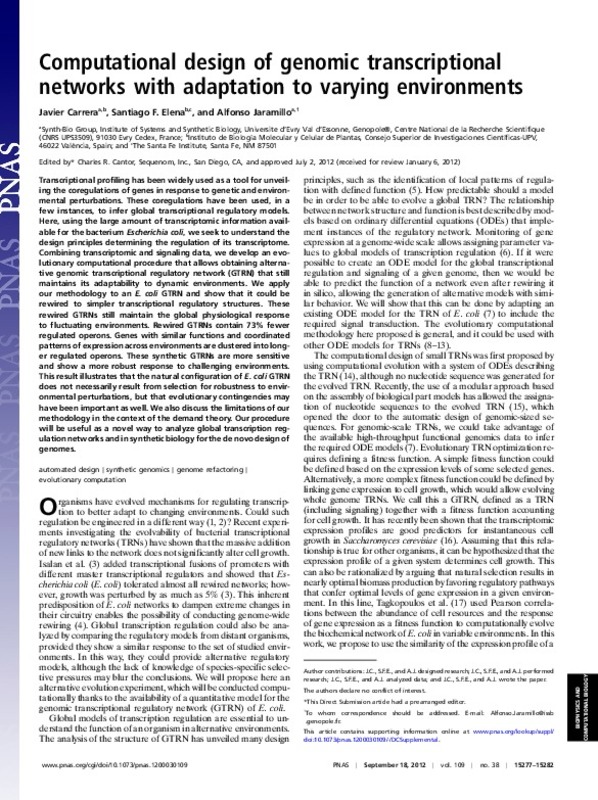JavaScript is disabled for your browser. Some features of this site may not work without it.
Buscar en RiuNet
Listar
Mi cuenta
Estadísticas
Ayuda RiuNet
Admin. UPV
Computational design of genomic transcriptional networks with adaptation to varying environments
Mostrar el registro completo del ítem
Carrera Montesinos, J.; Elena Fito, SF.; Jaramillo Rosales, A. (2012). Computational design of genomic transcriptional networks with adaptation to varying environments. Proceedings of the National Academy of Sciences. 109(38):15277-15282. https://doi.org/10.1073/pnas.1200030109
Por favor, use este identificador para citar o enlazar este ítem: http://hdl.handle.net/10251/81362
Ficheros en el ítem
Metadatos del ítem
| Título: | Computational design of genomic transcriptional networks with adaptation to varying environments | |
| Autor: | Carrera Montesinos, Javier Elena Fito, Santiago Fco Jaramillo Rosales, Alfonso | |
| Entidad UPV: |
|
|
| Fecha difusión: |
|
|
| Resumen: |
[EN] Transcriptional profiling has been widely used as a tool for unveiling the coregulations of genes in response to genetic and environmental perturbations. These coregulations have been used, in a few instances, to infer ...[+]
|
|
| Palabras clave: |
|
|
| Derechos de uso: | Reserva de todos los derechos | |
| Fuente: |
|
|
| DOI: |
|
|
| Editorial: |
|
|
| Versión del editor: | http://doi.org/10.1073/pnas.1200030109 | |
| Código del Proyecto: |
|
|
| Agradecimientos: |
This work was supported by FP7-ICT-043338 (Bacterial Computing with Engineered Populations), ATIGE-Genopole, TIN2006-12860 (Ministry of Science and Innovation [MICINN]), and the Fondation pour la Recherche Medicale grants ...[+]
|
|
| Tipo: |
|








